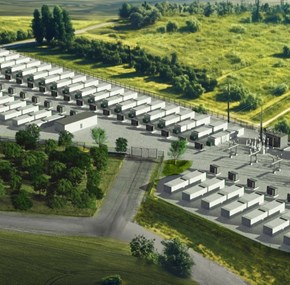Why you should care about cleaning your solar PV array
Marco Ferretti, Technical Project Manager, Obton
Ideally, the only thing that would reach the cells in a newly installed photovoltaic facility was solar irradiance and nothing else. Sadly, the reality of harnessing the power of the sun is not so simple.
Depending on its location on the globe as well as its proximity to local sources of pollution, a photovoltaic facility’s output is affected by the accumulation of dust, dirt and debris. And while the effects of so-called soiling on PV arrays may vary greatly from area to area the overall conclusion from numerous studies is clear: soiling negatively impacts power output.
In 2001, an American study found that in arid California for every day without rainfall the efficiency of PV panels dropped by an average of 0.2% as more and more dust accumulated. The study estimated the annual yield losses caused by soiling to be between 1.5% and 6.2% depending on the location of the PV plant.
Experience from other projects shows that output from a solar PV facility may drop by as much as 10 to 15% in areas with heavy air pollution, which is also why we continually monitor production.
Why some plants need – a lot – more cleaning
Our photovoltaic facility in Basilicata in the southern part of Italy is an excellent example to illustrate how much the PV facility’s location means to the amount of soiling.
The facility sits on a mountain side about 1,000 meters above sea level. The location is optimal due to the relatively low temperatures (high temperatures can also negatively impact yield) and the abundance of sun. And finally, the facility is blessed by minimal air pollution, which means that we until this day never have had to clean the PV arrays.
By contrast other facilities in Italy, in regions suffering from air pollution, must be cleaned four times a year to prevent soiling loss.
Rain – an unreliable cleaner
Relying on precipitation to do the cleaning may seem like a tempting solution in areas with regular rainfall but it can prove a very costly strategy. A long period without rain will have substantial effects on the output as shown in the American study mentioned above.
However, in some rare cases the cheapest solution may be to hold off on cleaning.
Cleaning a photovoltaic plant is not cheap. To illustrate, a 1 MW plant on a roof costs €1,700 as a crane is needed as well as deionized water to prevent limescale residue on the panels. Cleaning a land-based plant is not much cheaper at about €1,000, so it is always wise to check the weather forecast before initiating cleaning. The cost of cleaning may well exceed the cost of lost yield.
Your tilt angle may help you
Another factor that may impact how often your PV facility needs cleaning, is the tilt angle of your panels. Photovoltaic panels are carefully oriented at an angle to optimize the generation of solar electricity. This tilt angle of the panels however also affects the amount of soiling that occurs.
A 2011 study from Arizona State University showed that at a tilt angle of 0° (flat on the ground) the soiling loss was 2.02% while it was merely 0.96% at a 33° tilt angle.
Find the right O&M partner
Ideally your O&M partner will help you decide the optimal frequency for cleaning your solar PV array. They will also notify you if sudden changes in the weather and air quality warrants extraordinary cleaning.
At Obton, we have extensive experience in selecting O&M partners and are ready to help you find the right match for your project as well.







